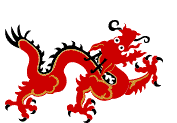South Vietnam consisted of three major geographic features. A coastal plain, varying in width from fifteen to forty kilometers, extends along most of the 1,400 kilometers of the coast. This plain abuts the second feature-the southeastern edge of the Annamite Mountain Chain, known in South Vietnam as the Central Highlands, which run from the northern border along the old Demilitarized Zone south to within eighty kilometers of Saigon. The Central Highlands are mostly steep-sloped, sharp-crested mountains varying in height from 5,000 to 8,000 feet, covered with tangled jungles and broken by many narrow passes. The southern third of the country consists almost entirely of an arable delta. These three geographical features helped shape the four military zones of South Vietnam. The northern zone, or I Corps Zone, which ran from the Demilitarized Zone down to Kontum and Binh Dinh provinces, consisted almost entirely of high mountains and dense jungles. At several points the Annamites cut the narrow coastal plain and extend to the South China Sea. II Corps Zone ran from I Corps Zone south to the southern foothills of the Central Highlands, about one hundred kilometers north of Saigon. It consisted of a long stretch of the coastal plain, the highest portion of the Central Highlands, and the Kontum and Darlac Plateaus III Corps Zone ran from II Corps Zone southwest to a line forty kilometers below the capital, Saigon. This was an intermediate geographic region, containing the southern foothills of the Central Highlands; a few large, dry plains; some thick, triple-canopy jungle along the Cambodian border; and the northern stretches of the delta formed by the Mekong River to the south. IV Corps Zone consisted almost entirely of this delta, which has no forests except for dense mangrove swamps at the southernmost tip and forested areas just north and southeast of Saigon. Seldom more than twenty feet above sea level, the delta is covered with rice fields separated by earthen dikes. During the rainy season the paddies are marshy, making helicopter landings and vehicular troop transport extremely difficult. Hamlets straddle the rivers and canals, and larger villages (up to 10,000 people) and cities lie at tile junctions of the waterways. Bamboo brakes and tropical trees grow around the villages and usually extend from 50 to 300 meters back on either side of the canal or hamlet. The entire country lies below the Tropic of Cancer, between the 8th and 17th parallels. The climate is generally hot and humid the year round. In winter the country lies under a high pressure system that causes a dry season in the south. In the summer, however, rains fall heavily, varying from torrential downpours to steady mists. The northern region of South Vietnam has the most rain, averaging 128 inches, while the Saigon (renamed Ho Chi Minh City after the communist victory) region averages 80 inches. In the northern region and the Central Highlands, where most of the fighting by U.S. troops during the war occurred, dense fog and low clouds often grounded all aircraft. About ten times a year, usually between July and November, typhoons blow in from the South China Sea, soaking South Vietnam with heavy rains and lashing it with fierce winds.
|


